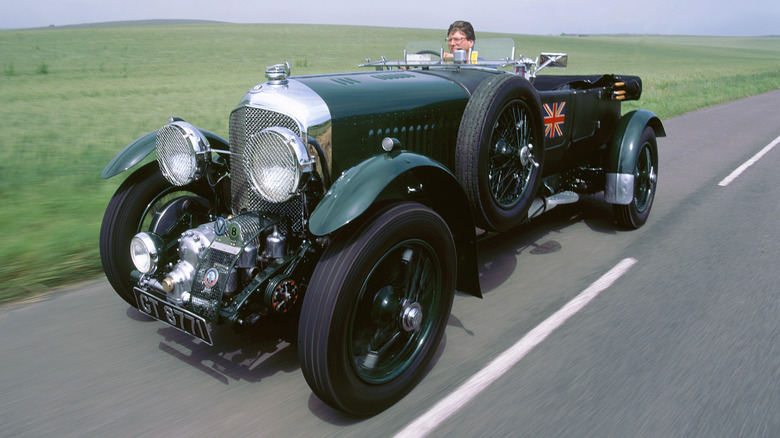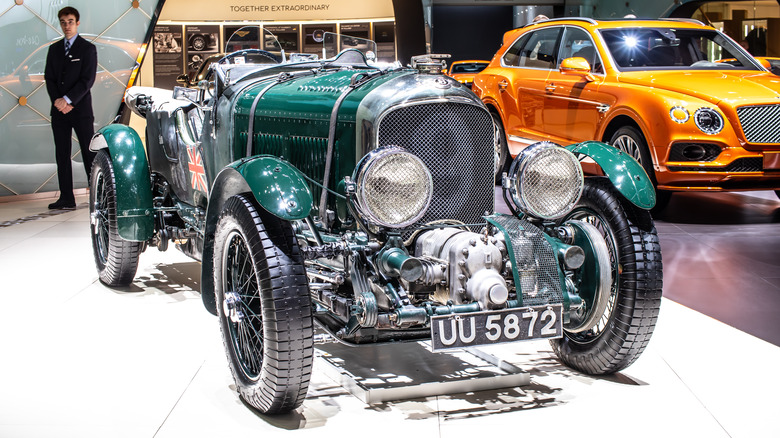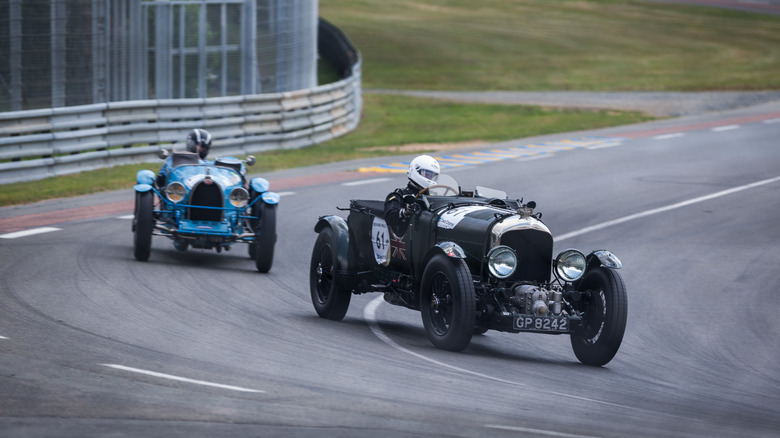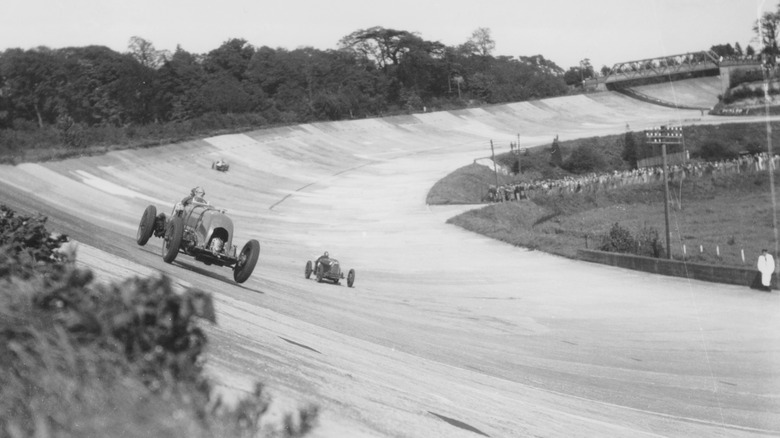One Of Bentley's Most Famous Cars Was Also One Of Its Biggest Failures
You would think that a vintage Bentley famous for racing at Le Mans, holding the lap record at Brooklands, and later being driven by James Bond in three of Ian Flemming's 007 novels would possess a competition record steeped in success. Not so. The 1929 4.5-liter Blower Bentley was a deeply unsuccessful racer. Despite now arguably the most famous car of its era, and perhaps even the best-known racing Bentley of all time, the Blower managed only two podium finishes in the period, finishing third in the 1929 Irish Grand Prix and second in the 1930 French GP.
Rubbing salt in the wound is how the Blower, named after the addition of a supercharger to its engine, was intended to build on the success of its predecessors, only to be beaten by them. These cars, with normally-aspirated engines that grew in capacity from a 3-liter four-cylinder to a 4.5-liter and eventually a massive 6.5-liter six-cylinder motor, won the 24 hours of Le Mans in 1924, then inclusively between 1927 and 1930 (via Britannica).
By 1929, Bentley's rivals were starting to catch up, so driver Sir Henry "Tim" Birkin set about adding a supercharger to the 4.5-liter engine, upping power from 132 horsepower to 243 horsepower in race tune, according to Bentley — that's humble by today's standard, but was mighty in a time when a typical family car like the Austin 7 produced 10.5 horsepower (via Silo Drome).
Birkin got his way
Company founder Walter Owen "W.O." Bentley was unamused, saying the supercharger would "pervert the engine's design and corrupt its performance," according to Bentley's website. But Birkin won over Bentley chairman Woolf Barnato, who gave the car his blessing. To meet racing requirements, 50 examples had to be produced. Financial backing came from Dorothy Wyndham Paget, daughter of Lord Queensborough, and Pauline Whitney, who was an American heiress and niece of Standard Oil Company partner Colonel Oliver Hazard Payne.
Only four of the planned five racing versions of the so-called Birkin Blower Bentley were built. Their Roost-type supercharger, developed by British engineer Amherst Villiers, was fitted to the front of the engine and is clearly visible between the headlamps. This location was perfect for telling a Blower from a regular Bentley 4.5-liter, but less than ideal for weight distribution, as the cars are said to understeer due to all of that weight sitting right on the nose (via Road & Track).
Similarly baffling, at least to today's drivers, is the 1920's pedal placement. The gas is in the middle, with the brake to the right and the clutch to the left. Brain Gush, former boss of Bentley Motorsport, told Classic & Sports Car magazine, "Driving a car with a central throttle pedal is also something, it focuses the brain ... You have to drive covering the brake pedal consciously, trail braking so you are there ready, then hope instinct doesn't take it back onto the gas."
A disappointing Le Mans
It is no understatement to say the Blower has an underwhelming racing record. Not ready in time for the 1929 Le Mans 24 hours, Birkin's Blower made its debut a fortnight later at the Brooklands Six Hour Race, but failed to finish (via Racing Sports Cars). The Blower's first outing at Le Mans came in 1930, where it was entered independently by Birkin alongside three Speed Sixes fielded by Bentley itself. A dual between Birkin and Rudolf Caracciola at the wheel of a Mercedes-Benz SSK "has passed into legend," says Bentley, with the two running neck-and-neck until Birkin overtook at high speed on the Hunaudières straight (now the Mulsanne straight) with two wheels on the grass.
But the high pace took its toll, and neither car finished the race. It was instead won, no doubt to the irritation of Birkin, by Barnato and Glen Kidston in Bentley's own Speed Six. The reason for the Blower's early retirement, Bentley racing manager Nobby Clarke is quoted as saying on the automaker's website, was that "the Blower eats [spark] plugs like a donkey eats hay."
Better news came at the Irish GP, with Birkin finishing third in 1929 and fourth in 1930, followed by second place at the 1930 French Grand Prix in Pau. That year also saw a second place at the Brooklands 500-mile, for a Blower driven by Dudley Benjafield and Eddie Hall. Birkin, teamed with George Duller, finished ninth.
A Brooklands record and James Bond's favorite
Although Bentley's most famous car never won a race, it has at least one racing accolade to its name: setting a new lap record at Brooklands in 1932. Using a modified Blower converted to a single-seat configuration with a faired-in radiator, Birkin lapped the banked circuit in southern England at an average speed of 137.96 miles per hour. The car was, Bentley says, "often airborne due to the poor quality of the concrete banking." That very car, registration UU 5871, sold at auction in 2012 for $6.1 million (via Bonhams).
Lastly, the Blower Bentley was a Bond car. Although it has never appeared in a 007 movie — "it's had its day, I'm afraid," Q said to Bond in 1964's "Goldfinger" — a 1931 Blower painted battleship gray was the spy's personal car in Ian Flemming's novels, appearing in "Casino Royale," "Live and Let Die," and "Moonraker," in which it is crashed and written off during a car chase.
Today, Bentley is currently building 12 continuation examples of the Blower, all exact replicas of Birkin's 1929 original and priced at around $2 million plus tax. Demonstrating its breadth of product offerings, Bentley is also working towards launching a new electric car every year between 2025 and 2030.



